Thoracic Spine: Why Is It Important?
The thoracic spine consists of twelve vertebrae at your mid-back, running from the top of your shoulder blades down to the bottom of your rib cage. It is the only spinal region that attaches to the ribs, and it is primarily responsible for trunk rotation.
The thoracic spine is an area of the body that is often under-treated. Most clinicians focus on the shoulder, cervical spine, or low back, as these are the areas that typically take the hit when it comes to pain and discomfort. Here at Refuge Physiotherapy, we look for and treat the root cause. Often, the root cause of shoulder, neck and low back pain is thoracic stiffness and dysfunction.
The thoracic spine is built for rotation, flexion, and extension. The body compensates for thoracic stiffness by recruiting the lumbar and cervical spine to make up for the loss in thoracic motion, which leads to overuse and pain at your neck and low back.
Adequate thoracic mobility is necessary to achieve and maintain good upright posture. However, due to excessive sitting and persistent poor postures, it becomes stiff and we often lose thoracic mobility. Our natural forward curve becomes more rounded and the ability of the spine to extend backwards and rotate decreases. This leads to a kyphotic forward head and neck posture, which is a big contributor to headaches and neck pain.
Thoracic mobility is essential for most sports. Poor posture and decreased thoracic mobility can affect performance in most sports, especially: swimming, golfing, baseball/softball, tennis, and olympic lifting.
Athletes often have difficulty with back squats and overhead movements due to thoracic stiffness. Decreased thoracic mobility makes it harder to get under a bar and open the chest. This creates a flexed posture that pushes the weight forward, making the lift harder on your knees, neck, and spine.
Thoracic stiffness also changes the position of the shoulder blade on the rib cage, limiting shoulder range of motion. This causes the back and shoulder muscles to work harder, especially with throwing, overhead reaching and presses, and can lead to shoulder rotator cuff issues.
Finally, limited thoracic mobility restricts rib movement and changes your breathing. Normal breathing requires the ribs to move up and out to the sides, like a bucket handle, increasing the overall circumference of the chest. Stiffness at the thoracic spine and rib cage leads to shallow breathing with higher respiratory rates and decreased overall lung capacity. This leads to a disadvantage for athletes, especially those in endurance sports or sports with a high cardiovascular demand.
The benefits of improved thoracic spine mobility include: improved range of motion, reduced incidence of injury, decreased shoulder and neck pain, reduced low back pain, and improved lung volume. Treatment for thoracic spine stiffness includes: thoracic manipulation, soft-tissue massage, cupping, dry needling, strength and postural exercises and stretching. Thoracic mobility can be increased by improving your overall posture and incorporating mobility exercises into your routine.
If you have noticed increased stiffness at your mid-back, neck, shoulder or low back pain, schedule an assessment with Refuge Physiotherapy. We look forward to helping you become stronger, move more easily, and perform better.
